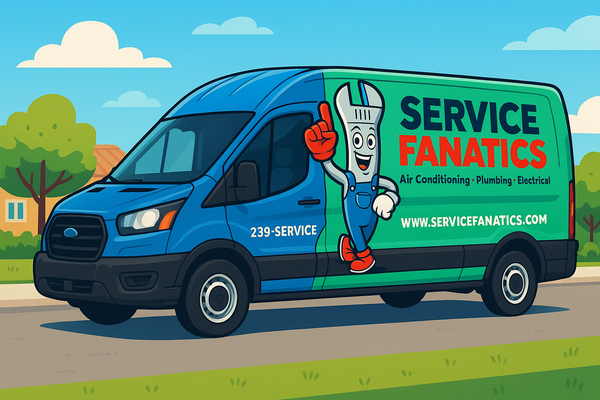How Local Businesses Can Prepare and Promote Services After a Disaster
Extreme weather events—like hurricanes, floods, and wildfires—can turn life upside down in hours. For local businesses, being prepared isn’t just about safeguarding your operation. It’s about being ready to serve your neighbors when they need you most.

Extreme weather events—like hurricanes, floods, and wildfires—can turn life upside down in a matter of hours. For local businesses, being prepared isn’t just about safeguarding your operation. It’s about being ready to serve your neighbors when they need you most.
Whether you’re in roofing, landscaping, home repair, restoration, healthcare, or even retail, your business can play a key role in community recovery. Here’s how to prepare, respond, and reach the people who need your help—using tools like geotargeted local ads to spread the word.
1. Prepare Your Business Before the Storm Hits
- Create a continuity plan: Identify how you’ll communicate with customers, access essential tools, and serve people even if your storefront is down.
- Protect customer data: Store invoices, appointments, and records securely in cloud-based tools like Google Drive, Dropbox, or QuickBooks.
- Stock essential supplies: If you offer home repairs or restoration, ensure you have access to generators, tarps, tools, or materials before demand spikes.
- Know your risks: Use resources like Ready.gov Business Toolkit or FEMA’s Emergency Planning for Businesses to understand your vulnerabilities.
2. Set Your Post-Event Plan in Motion
Don’t wait until after a disaster to figure out what to do next. Pre-planning your response will help you act fast when time matters most. Here’s how:
- Draft response messages now: Write email blasts, social posts, and local ads that can be quickly customized and launched after a storm.
- Build an emergency ad library: Create ready-to-go campaigns that highlight your most critical services.
- Have a customer update checklist: Know how you’ll inform past clients about service availability, safety updates, or schedule changes after the event.
- Designate a point person: Assign someone to lead your response and coordinate advertising and outreach immediately following an event.
Preparedness isn’t just about survival—it’s about showing up strong when your community needs you.
3. Frame Your Services as Community Support
People aren’t just looking for a product or service—they’re looking for help. Make it easy for them to understand what you do and how you can assist in an emergency.
- Highlight services that are especially relevant post-disaster (e.g., water removal, tree removal, temporary lodging, emergency plumbing).
- Train your team to respond with empathy, flexibility, and clear communication.
- Share helpful resources like NOAA Weather Safety Tips or DisasterAssistance.gov.
4. Have Emergency Ads Ready to Launch
Speed matters after a storm. Having pre-approved templates ready means you can launch ads immediately without scrambling for creativity.
- Create calm, confident messaging like: “Available for Emergency Roof Repairs” or “Here to Help: 24/7 Flood Cleanup.”
- Include your phone number, response time, and service area radius.
- Keep tone focused on support, not urgency for sales.
5. Use Geotargeted Ads to Reach Impacted Areas
Platforms that allow geotargeted local advertising help you target customers based on specific neighborhoods, ZIP codes, or a radius around disaster zones. This ensures you’re reaching people close enough to serve immediately.
- Promote relevant services only to areas in need (e.g., offering generator sales to areas without power).
- Use keywords like “emergency help,” “storm recovery,” “local support.”
- Test short-run campaigns (2–5 days) and adjust based on response.
6. Partner with Other Local Businesses
No one rebuilds alone. Reach out to fellow business owners to bundle services or refer each other to neighbors in need.
- Example: A roofer and a painter team up to offer “Restoration Packages.”
- Share each other’s services in ads or social media posts.
- Support local nonprofits or churches offering disaster aid to build goodwill.
7. Promote Trust to Protect Your Community
In the aftermath of a disaster, unlicensed or out-of-town contractors often target vulnerable homeowners looking to make a quick buck. By promoting your business clearly and professionally, you help crowd out bad actors and offer your neighbors a trustworthy local alternative.
- Include your license and credentials in ads, emails, and website copy—transparency builds credibility fast.
- Use consistent branding so people can recognize you across social media, yard signs, flyers, or digital ads.
- Work through trusted platforms to show you’re part of a verified local business ecosystem.
- Educate your audience: Share tips on how to spot scams and encourage residents to check contractor licenses through your local municipality or state website.
Being visible and professional isn’t just good for business—it’s a service to your neighbors who might otherwise be taken advantage of during a stressful time.
8. Follow Up and Stay Visible
- Check in with past customers to see if they need more help.
- Ask for testimonials that share how you helped during recovery—it builds trust for the future.
- Offer seasonal services (like stormproofing or inspections) as preventive care.
Final Thoughts
Disasters are unpredictable, but how your business responds can define your role in the community. By preparing in advance and using smart local marketing tools to reach audiences fast, you’re not just promoting a service—you’re offering peace of mind.
Need help setting up a campaign that reaches neighbors when it matters most? We’re here to help you get started.





